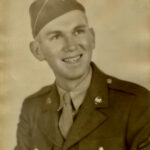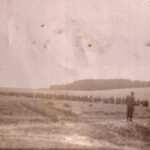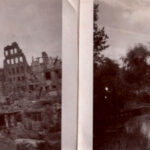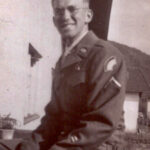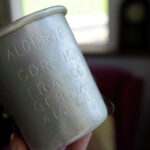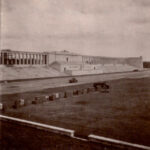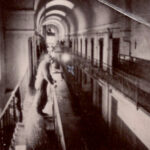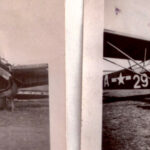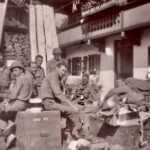George Pouder was born January 18, 1923 in New York City. He grew up in the Bronx during the difficult times of the Great Depression, a period that impacted his family and the neighborhood. George recalls that the quality of his schooling varied, but that he took full advantage of the city, exploring it with his friends via the subway, and learning about the city’s places and history. He was also very active in scouting, and that he in fact became an eagle scout, something that would help him later in life. George also watched the coming of the war; as a teenager he learned about Kristallnacht and Neville Chamberlain’s ineffective appeasement policy. When the attack on Pearl Harbor happened, George was 18 and in his first semester of college. Because of this he was initially deferred but he was called up in short order and sent to Fort Belvoir, and then on to Camp Reynolds, where he developed pneumonia. That illness proved to be fateful for George: had he not been hospitalized, he would have been on a troopship that was torpedoed and sunk, killing 504 men. They put him on a Liberty Ship bound for north Africa not too long after, part of a convoy that landed in Oran, Algeria. After about a month, he boarded a French cruiser and headed to Corsica, where George was stationed on an American airfield for the next six months and attached to the 1379th Engineer Petroleum Distribution Company. Operation Dragoon took place later in the summer of 1944, and again George was at work building a pipeline in the Marseilles area, but with the coming of winter the Battle of the Bulge erupted in northern France. With heavy casualties the Americans looked to rear echelon units and began the process of moving those men to the front lines; initially George went to St-Cyr for infantry training, and then he was called up to the 42nd Infantry Division to replace a combat engineer who had been killed. George joined the 42nd at Nuremberg, and not long after he was involved in the liberation of Dachau, the infamous Nazi concentration camp. At this point the war was winding down, and German soldiers were surrendering en masse: George took part in the victorious entry of the American army into Munich. His final assignment would come after he was transferred to the “Big Red One” and sent back to Nuremberg, where it was his job to check the cells for potential ways the Nazi leaders might try to commit suicide. In early 1946 George made his way home – still just 23 years old. He found a job in a greenhouse, the first a few such jobs in the immediate postwar years; eventually he bought that greenhouse and made it his career, marrying and raising his family along the way. Crestwood students were able to do a zoom interview with George in August 2023.
Videos
Click next video below to keep watching
